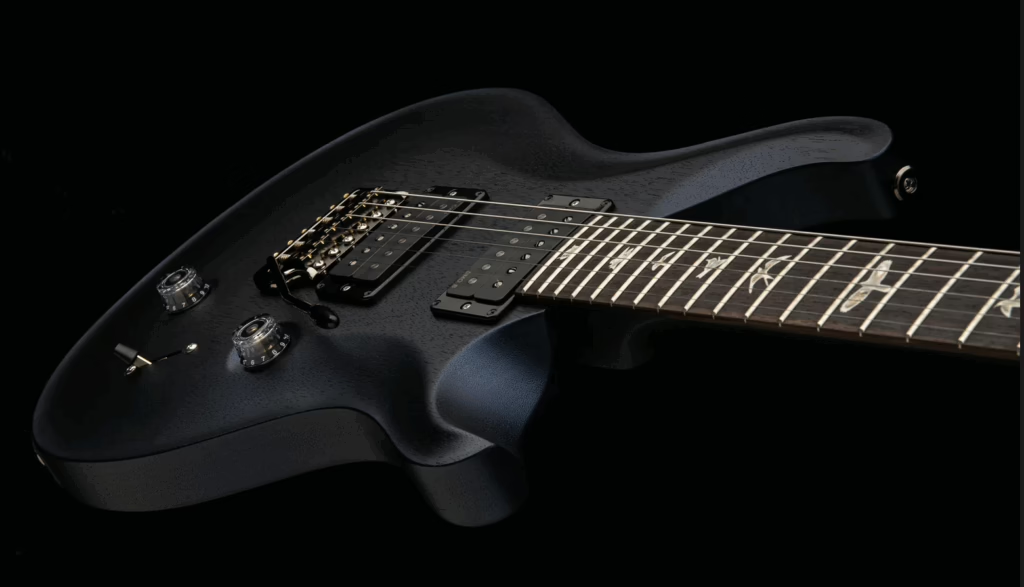Advertisement
Photo provided by: Holeyboards
__________________________________________________________________________________
Why Pedalboards Matter
Every guitarist knows that pedals are where magic happens. Overdrives, delays, reverbs, and loopers allow players to craft sounds that define their voice. But without organization, even the best pedals can become a tangled mess of patch cables and unreliable power. That’s where pedalboards earn their reputation: they provide stability, protect your investment, and ensure your effects work together seamlessly.
A solid pedalboard does more than hold pedals in place—it turns your gear into a consistent, ready-to-play rig. No matter the venue or studio, your sound arrives intact.
Enter the Holeyboard
While traditional flat boards offer stability, they often lock players into a single layout. Rearranging your signal chain can feel like a chore. Holeyboard Pedalboards were designed to change that.
Built around a modular system of interlocking pieces, Holeyboards grow with your needs. Start with a small setup and expand when your rig gets more ambitious. This adaptability makes them a natural fit for guitarists whose sound is constantly evolving.
A Different Kind of Design
What sets Holeyboards apart is their patented perforated surface. The grid of holes may look unconventional, but it’s a breakthrough in pedal management.
In practice, this means you can place pedals exactly where they work best in your signal chain—without fighting the limitations of a flat board.
Ergonomics That Work
Beyond flexibility, Holeyboards are designed with player comfort in mind. The tiered layout raises back-row pedals, making them easier to stomp without disturbing pedals in front. Dedicated side platforms accommodate expression pedals or volume pedals, ensuring they’re accessible without wasting prime space.
For gigging musicians, that means fewer mis-steps, cleaner transitions, and a board that feels like an extension of your playing style.
Key Pedalboard Competitors
Below are the main boards we’ll compare:
Boss BCB series (e.g. BCB-30X, BCB-90X, BCB-1000) — molded cases, foam inserts, lots of protection.
Holeyboard (the modular, perforated-two-tier style board)
Temple Audio (Templeboards) — modern aluminum boards with modular plates and side modules.
Voodoo Lab Dingbat series — rugged aluminum boards with mounting for power supplies, comes with cases, and some switching options in PX models.
How They Fit into a Pedal Signal Chain / Use-Case Scenarios
Here are a few typical user styles / needs and which board might be best in each case:
| Scenario | What’s Most Important | Best Choices |
| Gigging Player Who Adds Effects Over Time | Flexibility; room to grow; ability to rearrange chain; strong build | Holeyboard or Temple Audio — their modularity allows you to add pedals, change layout without buying an entirely new board. |
| Travel/Flight Case / Touring Rigs | Protection, secure latching, transport-friendly shape, covers/cases | Boss BCB series is great; Voodoo Lab Dingbat with its gig bag; Temple boards also have handles/rails. Holeyboard works, but added two-tier and metal parts might increase bulk. |
| Minimal Rig or Pedals Rarely Changed | Simplicity, small footprint, tidy power, light-weight | Voodoo Lab Dingbat (Tiny / Small-EX) or Holeyboard base modules if you only need a few pedals; Boss BCB-30X works well. |
| Complex Board with Switching | Need for integrated loops/switchers, robust power management, cabling tidy | Voodoo Lab Dingbat PX shines with integrated switcher; Temple Audio with side modules helps manage I/O. Holeyboard doesn’t usually include a built-in switcher, so you'd add external; but its layout supports adding power modules and mounting surface. |
| Pedalboarding on a Tight Budget | Cost vs value; avoid overspending on features you don’t need | Foam insert & resin boards (Boss BCB) are often more affordable for basic protection; small Dingbat boards; smaller Holeyboard module if you start small. Modular boards and switching add cost. |
Voices from the Stage
“A pedalboard should never get in the way of creativity—it should encourage it. Holeyboards give me the freedom to rearrange and expand without starting over. That’s invaluable when your tone is always evolving.”
— Guitar Thrills Gear Editor
Pros & Cons of Holeyboards
Pros:
Cons:
Final Thoughts
Your pedal signal chain reflects your musical journey—always shifting, always expanding. A rigid pedalboard can hold you back, but a dynamic system like Holeyboard adapts to your creativity.
Whether you’re rocking a three-pedal blues rig or a spaceship of modulation and delay, Holeyboards make sure your signal chain is supported by something as flexible and forward-thinking as your music.

A RECAP OF WHAT YOU MIGHT HAVE MISSED